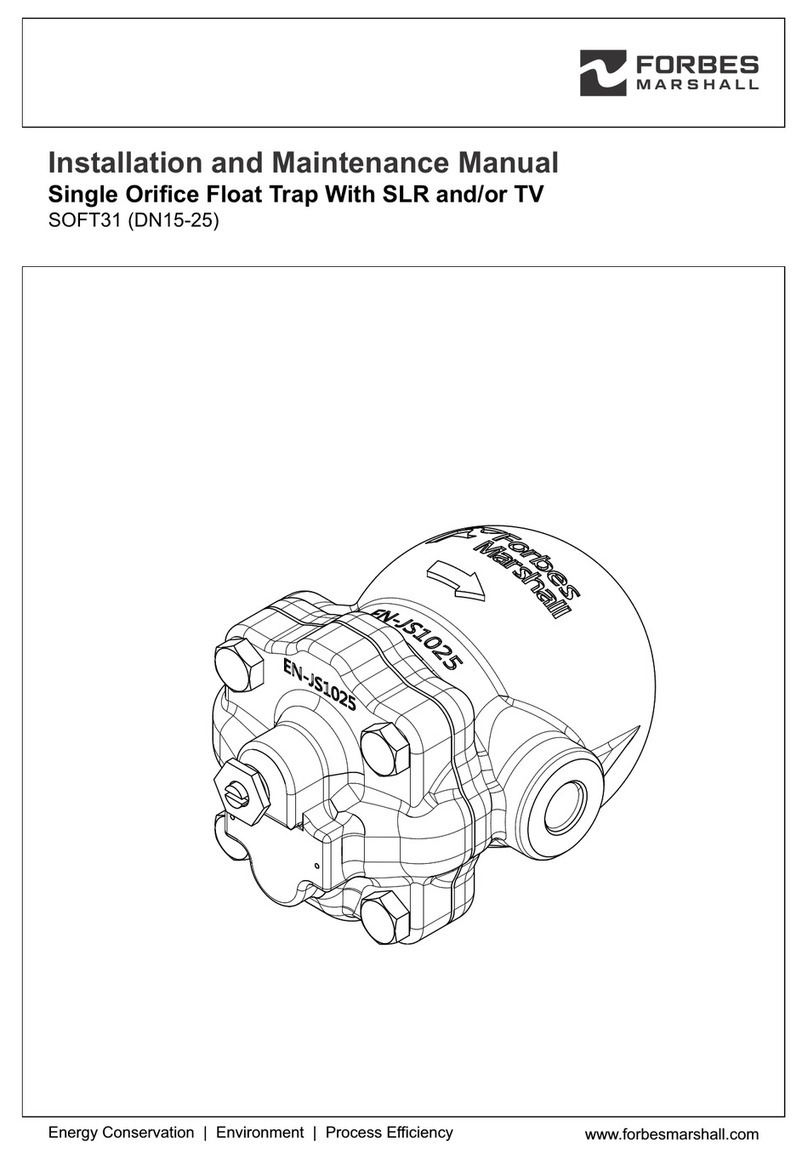Forbes Marshall CODEL TunnelTech205 User manual

Issue : B
Rev. : 1
Date : 11/07/22
Ref. : 100042
OPERATING MANUAL
TunnelTech205
Tunnel Atmosphere
Air Quality Monitor for NO2
CODEL International Ltd.
Unit 4 , Station Road, Bakewell, Derbyshire DE45 1GE United Kingdom

Issue : B
Rev. : 1
Date : 11/07/22
Ref. : 100042

Technical Manual CODEL
Issue : B
Rev. : 1
Date : 11/07/22
Ref. : 100042
CODEL International Ltd is a UK company based
in the heart of the Peak District National Park at
Bakewell, Derbyshire. The company specialises in
the design and manufacture of high-technology
instrumentation for the monitoring of combustion
processes and atmospheric pollutant emissions.
The constant search for new products and existing
product improvement keeps CODEL one step
ahead. With a simple strategy, to design well-
engineered, rugged, reliable equipment, capable
of continuous operation over long periods with
minimal maintenance, CODEL has set standards
both for itself and for the rest of the industry.
All development and design work is carried out ‘in-
house’ by experienced engineers using proven
state-of-the-art CAD and software development
techniques, while stringent assembly and test
procedures ensure that the highest standards of
product quality, synonymous with the CODEL
name, are maintained.
High priority is placed upon customer support.
CODEL’s dedicated team of field and service
engineers will assist with any application problem
to ensure that the best possible use is derived from
investment in CODEL quality products.
If you require any further information about
CODEL or its products, please contact us using
one of the numbers below or alternatively visit our
web site.
t : +44 (0) 1629 814 351
f : +44 (0) 8700 566 307
web : www.codel.co.uk
Over the past 15 years CODEL tunnel sensors have
been supplied to more than 400 road and rail tunnels
throughout the world. Our impressive reference list
includes Eurotunnel (France), Mont Blanc Tunnel
(France), Dartford Tunnel (UK), Lane Cove Tunnel
(Australia), Snow Mountain Tunnel (Taiwan) and the
SMART Tunnel in Malaysia, plus many others
throughout China, Italy, Switzerland and South
Korea placing CODEL as a world leader in tunnel
atmosphere monitoring.
CODEL’s tunnel sensor range is further extended by
additional sensors for the measurement of CO, NO,
Visibility and Wind Speed and Direction.
Additional product data sheets: TunnelCraft III Air
Quality Monitor for the Measurement of Carbon
Monoxide, Nitric Oxide & Visibility & TunnelCraft III
Air Flow Monitor for the Measurement of Tunnel Air
Speed & Direction, are available to download from
our web site: www.codel.co.uk.

Technical Manual CODEL
Issue : B
Rev. : 1
Date : 11/07/22
Ref. : 100042

Technical Manual CODEL
Issue : B
Rev. : 1
Date : 11/07/22
Ref. : 100042
1. Air Quality Monitor for NO2 1
2. Principles of Operation 3
2.1. Air Quality Monitor (AQM) ............................................................................................................................3
2.1.1. NO2 Measurement................................................................................................................................3
3. Specifications 6
3.1. General...................................................................................................................................................6
3.2. Air Quality Monitor –NO2.......................................................................................................................6
3.3. Tunnel Display Unit (TDU) .....................................................................................................................6
3.4. Power Supply Unit (PSU).......................................................................................................................6
4. Basic Equipment Supply 7
4.1. Standard Supplied Items..............................................................................................................................7
4.2. Customer Supplied Items.............................................................................................................................7
5. Installation 8
5.1. Check the Equipment...................................................................................................................................8
5.1.1. NO2 Air Quality Monitor........................................................................................................................8
5.1.2. Power Supply Unit (PSU)......................................................................................................................8
5.1.3. Tunnel Display Unit (TDU)....................................................................................................................9
5.2. Connections..........................................................................................................................................10
5.2.1. Connection schedule, (for AQM & TDU up to 100m apart).........................................................10
5.2.2. Connection Schedule J-Box configuration 1, (for AQM & TDU up to 1km apart)........................11
5.2.3. Connection Schedule J-Box configuration 2, (for AQM & TDU up to 200m apart) .....................12
6. TDU Operation 13
6.1. Introduction.................................................................................................................................................14
6.1.1. Measurement ......................................................................................................................................14
6.1.2. Calibration...........................................................................................................................................14
6.2. Normal Start-Up Procedure........................................................................................................................14
6.3. Modes of Operation....................................................................................................................................14
6.4. Key Operation.............................................................................................................................................15
6.5. Program Tree .............................................................................................................................................16
6.6. Operating Mode..........................................................................................................................................16
6.7. Parameter Mode (Mode 2) .........................................................................................................................17
6.7.1. Identification........................................................................................................................................17
6.7.2. Output..................................................................................................................................................17
6.7.3. Alarm...................................................................................................................................................17
6.7.4. Clock ...................................................................................................................................................17
6.7.5. Auto Cal...............................................................................................................................................17
6.8. Chamber.....................................................................................................................................................18
6.9. Diagnostic Mode (Mode 4) .........................................................................................................................18
6.9.1. Temperature........................................................................................................................................19
6.9.2. Y & Z Values .......................................................................................................................................19
6.9.3. NO2 Values.........................................................................................................................................19
6.9.4. Calibration Data ..................................................................................................................................19
Table of contents
Other Forbes Marshall Industrial Equipment manuals


















